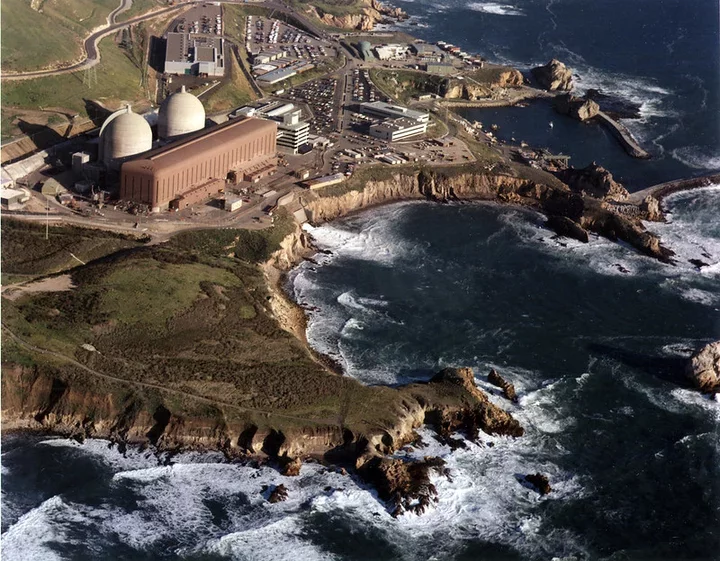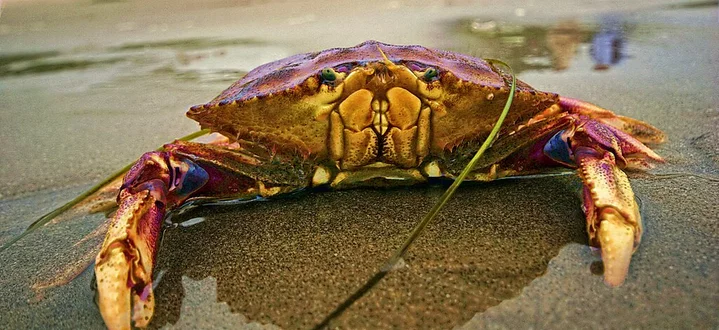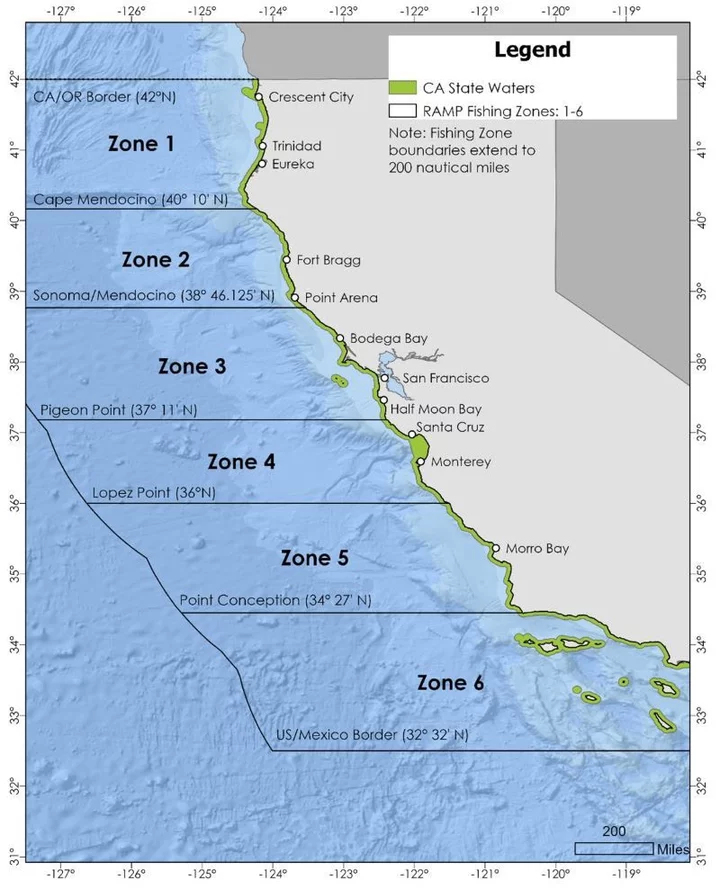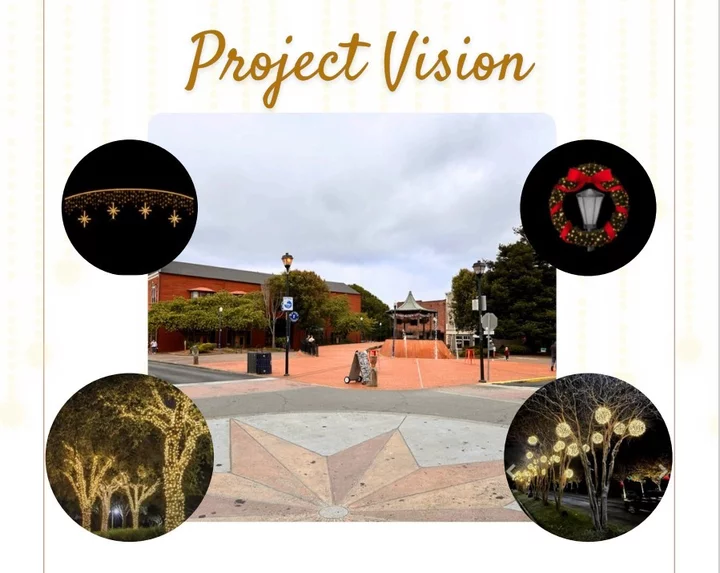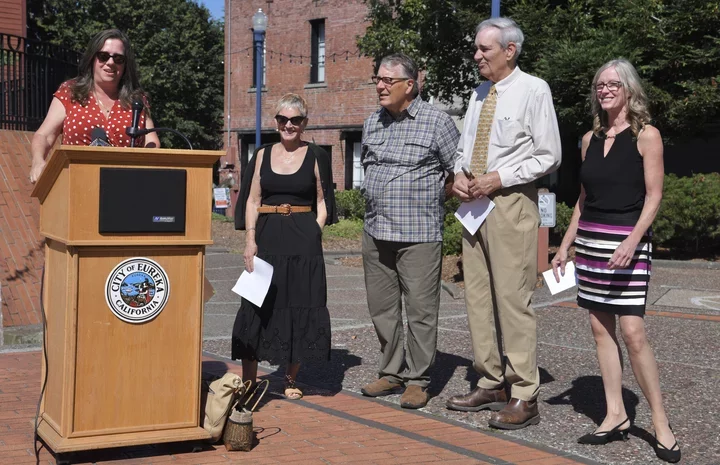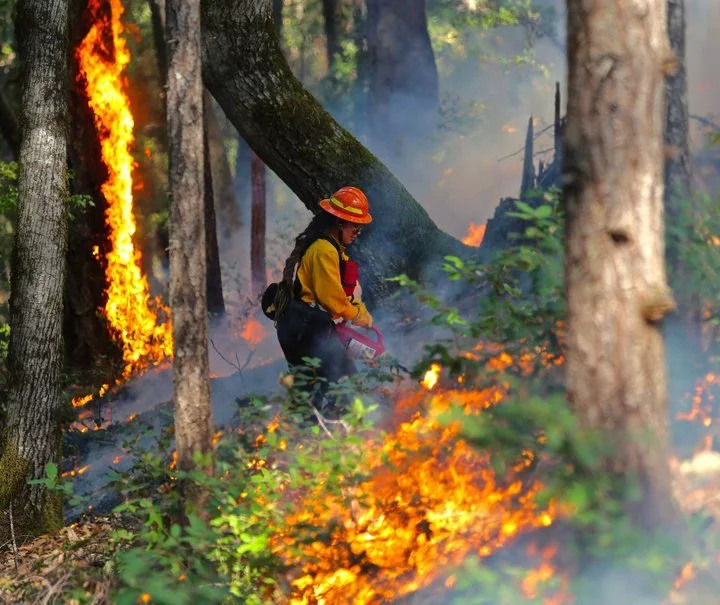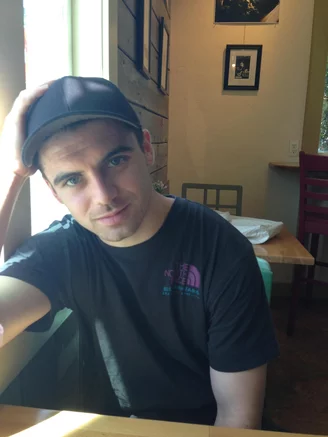Cal Poly Humboldt Student and Community Member Alana Hackman Hits It Big with TikTok Video
Dezmond Remington / Friday, Oct. 25, 2024 @ 3:49 p.m. / Internet
Alana Hackman. By Alex Anderson.
Alana Hackman made a TikTok.
Almost 5 million people liked it.
Hackman was surprised — but not too surprised.
“I feel like I’ve always wanted [social media] fame in some way, just because I’ve done so much work there in social media,” Hackman said. “So I feel like it was bound to happen.”
Hackman, 22, is a journalism major at Cal Poly Humboldt and a bona fide TikTok sensation, and has been for a couple weeks — and maybe for a couple more.
The video, posted Oct. 2 and scored to the song “Laterals” by Fat Coda Studios, shows Hackman making her roommate’s boyfriend perform an interpretive dance as trade for letting him stay the night.
Over 27 million people have watched it, and it’s spawned thousands of videos of people shimmying as payment; everything from husbands getting funky to watch football to people dancing for dinner to a woman asking her husband to boogie while she’s in labor.
Social media is second nature to Hackman. She’s worked six or seven social media jobs for a variety of organizations, such as Peer Health or KRFH student radio. Her thumb is constantly on the pulse of what’s popular. She figured the video would be popular because it had some things that many obscenely popular TikToks do: Women making men do something in a light-hearted way and a funny, novel concept. She does admit that it wasn’t all just her though.
“I can’t take all the credit,” Hackman said. “His dance moves are really good. That was all him.”
The video only shows a fraction of the dancing. Hackman said the boyfriend danced for around five minutes. He was indeed allowed to stay, though Hackman made it clear that he always would have been able to stay over and they were just having fun.
As with everything on the internet, it has its critics. She’s not letting it get her down.
“At first it was a little ‘Um, OK,’’ Hackman said. “But then I also thought, ‘Oh, it’s the internet.’ People just say anything. But it was funny. I feel kind of bad in the same sense, because [Hackman’s roommate and her boyfriend] aren’t really on social media, and I’m the social media freak. So I felt bad. I feel like I’m exploiting them, and people keep asking me to remake stuff and ask him questions and other things. I’m, like, no! It was a one-hit thing. You just gotta let it be.”
Though Hackman and the people in the video have been getting recognized out on the street or in the Co-Op, she doesn’t plan to let the success go to her head.
“I’m still Alana,” she said. “Trends come and go so fast … [you should] make people dance more though. That’s a fun barter. Barter more and make people dance as a result of that. It brings joy to life and a light-heartedness to demands. I would have never known he could dance like that if I didn’t make him.”
BOOKED
Today: 11 felonies, 12 misdemeanors, 0 infractions
JUDGED
Humboldt County Superior Court Calendar: Yesterday
CHP REPORTS
Us101 / Requa Rd (HM office): Animal Hazard
ELSEWHERE
RHBB: Thunderstorms Spark Dozens of Fires Across Shasta-Trinity and Klamath National Forests
NY Times : A Fish Falls From the Sky and Sparks a Brush Fire in British Columbia
The Cool Down: Scientists issue warning after uncovering alarming data from mountain summit — here’s what you need to know
Politico: DOJ is walking back the White House’s goal to arrest 3,000 immigrants per day
Redwood Coast Energy Authority Board Reconsiders, Opts to Take Nuclear Energy From Diablo Canyon For One Year
LoCO Staff / Friday, Oct. 25, 2024 @ 2:13 p.m. / Energy , Local Government
The Diablo Canyon Nuclear Power Plant, in San Luis Obispo County, is the last remaining operational nuclear plant in California. | Image via the Nuclear Regulatory Commission, CC BY-NC-ND 2.0.
PREVIOUSLY:
- Conflicted Board of Redwood Coast Energy Authority Declines to Accept ‘Free’ Nuclear Power From Diablo Canyon
- Redwood Coast Energy Authority to Reconsider Its Decision to Decline ‘Free’ Nuclear Power
###
Given the opportunity for a do-over thanks to a process error last month, the board of directors for Redwood Coast Energy Authority (RCEA) reversed course and decided to accept an allocation of nuclear energy into the mix of power it purchases on behalf of local ratepayers.
Unlike last time around, when the board expressed a lot of internal conflict over the decision, yesterday’s hearing at Eureka’s Wharfinger Building proved almost unanimous, with only Board Chair and Arcata representative Sarah Schaefer voting to reject the allocation. However, the board opted to accept the nuclear energy for only one year, while using the proceeds to invest in its renewable energy portfolio.
The vote required the RCEA board to make an exception to the agency’s Energy Risk Management Policy, which bans long-term nuclear energy procurement.
Diablo Canyon was supposed to be shut down by the end of 2025, but with California’s renewable energy development lagging behind schedule, the state legislature approved a $1.4 billion loan to PG&E to keep it operating through 2030. As part of that deal, all jurisdictional entities under the California Public Utilities Commission (CPUC) are paying a share of the costs, and they all have the option of receiving an allocation of the power generated by Diablo Canyon.
RCEA Community Strategies Manager Brytann Busick told the Outpost via email that the board deliberately chose to make this a short-term agreement.
“This opportunity to accept or reject the Diablo Canyon allocation will be brought before the Community Advisory Committee and Board of Directors each subsequent year until 2030,” Busisk said. “Community input would be sought again. Based on the acceptance of the allocation, there will be no impact on customer electricity bills.”
Reached by phone, RCEA Eureka representative Scott Bauer, who previously voted against taking the allocation, said the decision to keep Diablo Canyon operating was made by Gov. Gavin Newsom and the state government, so the only decision left to community choice aggregators like RCEA was whether to accept the “free” nuclear energy or stand on principle given the environmental implications, including the challenges of long-term nuclear waste storage.
This time around, the board chose to take the power that ratepayers are paying for.
“The end result was we’ll accept it but review [that decision] yearly, with hopes that maybe in a year or two we have so much renewables in our portfolio we can say we don’t want [nuclear] in our power mix,” Bauer said.
Specific allocation amounts have not yet been published, but according to an RCEA staff report, the local agency’s allocation would likely only meet about 2% of its 2025 power portfolio.
Bauer said the savings won’t be enough to dramatically slash ratepayer bills.
“I did the math,” he said. “As a ratepayer the rebate would be 60 to 70 cents per month, which is pretty much insignificant.”
Instead, he said, RCEA plans to invest the savings in the development of more renewable energy sources.
Dungeness Time! Recreational Crabbers Can Start Getting Their Crab On One Week From Now, Though the Commercial Fishery is Again Delayed
LoCO Staff / Friday, Oct. 25, 2024 @ 1:42 p.m. / Fish
Stare deeply into my eyes. Photo: Dana Hutchinson, CC BY 3.0, via Wikimedia Commons
Press release from the California Department of Fish and Wildlife:
The recreational Dungeness crab season will open statewide beginning Nov. 2, 2024. The use of traps will be temporarily prohibited between the Sonoma/Mendocino County line and Lopez Point, Monterey County (Fishing Zones 3 and 4) when the season opens due to presence of humpback whales and potential for entanglement from trap gear. Recreational take of Dungeness crab by other methods, including hoop nets and crab snares, is not affected by the temporary trap restriction in these areas.
The use of recreational crab traps will be allowed when the season opens in Fishing Zones 1, 2, and 5. As a reminder, crab traps cannot be used south of Point Arguello. In addition, a Fleet Advisory has been issued for all Fishing Zones for the recreational fishery.
The commercial Dungeness crab fishery south of the Sonoma/Mendocino County line was scheduled to open on Nov. 15, 2024, in Fishing Zones 3, 4, 5 and 6. However, the season opener has been delayed in those zones due to the high abundance of humpback whales and large number of recent entanglements.
CDFW reminds anglers that the deployment and use of crab traps in any recreational crab fishery (including rock crab) is temporarily restricted in Fishing Zones 3 and 4 until lifted by the CDFW Director. Recreational crabbers should also implement best practices when fishing with hoop nets or crab traps in open Fishing Zones, as described in the Best Practices Guide.
CDFW anticipates the next risk assessment will take place on or around Nov. 15, 2024, at which time the Director will re-evaluate risk for the Dungeness crab fisheries. That risk assessment is expected to inform the potential for a statewide commercial fishery opener on Dec. 1, 2024, and the potential to modify the recreational trap restriction.
For more information related to the risk assessment process, please visit CDFW’s Whale Safe Fisheries page or more information on the Dungeness crab fishery, please visit www.wildlife.ca.gov/crab
Know your zone! Graphic: CDFW.
THEY DID IT! Thanks to the Former Mayors, Old Town Eureka Will Have Extra Twinkle This Holiday Season (But You Can Still Pitch In)
LoCO Staff / Friday, Oct. 25, 2024 @ 11:21 a.m. / News
This is the project vision. Image courtesy of the former mayors.
PREVIOUSLY:
Press release from Eureka Main Street:
In a show of community spirit, five former Mayors of Eureka have come together to light up Old Town for the holiday season. Nancy Flemming (1990-2002), Peter LaVallee (2002-2006), Virginia Bass (2006-2010), Frank Jager (2010-2018) and Susan Seaman (2018-2022) launched the Former Mayors’ Holiday Lighting Project in September with an initial fundraising goal of $20,000. Thanks to generous contributions from local businesses and residents, the campaign has raised $22,937 to date! These funds will be used exclusively for the display including decorations, lighting, and the necessary infrastructure to support it all.
This project is a collaboration between former Mayors, the City of Eureka, and Eureka Main Street, aligning with the City’s lighting plan. Both the City of Eureka and Eureka Main Street are providing logistical and administrative support to ensure the project’s success.
Building on the decorations already used by local businesses—such as red velvet ribbons, warm white twinkle lights, and garlands – the project will feature twinkle lights, garlands, wreaths, and lighted balls around the Gazebo area, along with a light display over F and 2nd Streets. Installation will begin in November to be ready for Small Business Saturday.
Sponsors for the project include: PG&E, Vineyard Offshore, Coast Central Credit Union, Redwood Capital Bank, RWE, Eureka Natural Foods, Building and Construction Trades Council of Humboldt and Del Norte Counties, Pierson’s Building Center, Jitterbean, Express Pros, and the Knights of Columbus and many wonderful individual donors.
PG&E was an early supporter of the project and is one of the two anchor, or “Santa,” sponsors. “The spirit of cooperation embodied by the former Mayors group is a powerful example of how our community can and does work together,” said Alison Talbott, local Government Relations Representative for PG&E. “PG&E is proud to play a role in their efforts.”
Erik Peckar, Vineyard Offshore Director of External Affairs for the West Coast, represents the other anchor sponsor. He said, “As a business with our office in downtown Eureka, Vineyard Offshore is proud to work with our neighbors and the former Mayors of Eureka in sponsoring the Holiday Lighting Project, that will inspire support for our local business neighbors during this holiday season. We are grateful for the collaboration amongst the city’s leaders and look forward to continued support and partnership with the City of Eureka”.
“We’ve been so grateful for the support of the community for this project,” said Seaman. “This has been our first effort as a team, but we hope to continue into future years to build really celebratory and eye-catching displays that celebrate our downtown businesses, reminding us all that we should be supporting them as much as possible during the holiday season.”
If you’re interested in supporting the Eureka Former Mayors Holiday Lighting Project, they will continue to accepting donations through their Go Fund Me link here.
The Former Mayors at their launch party: Susan Seaman, Nancy Flemming, Peter LaVallee, Frank Jager and Virginia Bass. Photos by Isabella Vanderheiden.
PRESCRIBED BURN ROUNDUP: Big, Good Fires Planned Today and Tomorrow in the Blue Lake and Scotia Areas, Respectively, Weather Permitting
Hank Sims / Friday, Oct. 25, 2024 @ 10:27 a.m. / Fire
Prescribed burn near Orleans a few years ago. Photo: Andrew Goff.
We’re doing a lot more prescribed fires now then we did 10 years ago, and that’s a good thing. The idea is that you burn up some understory to avoid the chances of a big, out-of-control fire in the coming years. Local Native American people did this for time immemorial, ages ago, and we’re all coming around to the idea that they knew what they were doing.
The damp season is here, which means it’s a decent time to do this work. We’ve received word of a couple of large-ish burns planned today and tomorrow, with the understanding that these things can change with weather conditions.
First up: Planned for today about one mile northeast of Blue Lake, a 50-acre Calfire controlled blaze that should be visible for quite a ways in all directions.
Calfire says:
The project is designed to use prescribed fire to enhance browse for grazing, prairie maintenance, and to reduce fuel loading. The objective is to support grazing and reduce the invasion of brush and conifers on the site.
Tomorrow, the Humboldt Redwood Company plans to do something similar with 25 acres just outside Scotia. It says:
Humboldt Redwood Company will be conducting a broadcast burn within a logging unit on Saturday, 10/25/2024. The burn will be approximately 25 acres and located 4.5 miles Southeast of Scotia. Smoke will be visible from Highway 101 and the surrounding communities, fire will be visible from Pepperwood, Shively, Homes, and various locations along the Eel River. CAL FIE and local fire districts have been notified of this broadcast burn.
Don’t be too alarmed if you see smoke columns in those areas in the coming days. Also, Calfire would like to remind you that though their professional burners are conducting these projects now, amateur burning is still prohibited in their area of responsibility:
As a reminder, outdoor burning remains suspended in State Responsibility Area (SRA). Debris (pile) burning has historically been one of the leading causes of vegetation fires in the Humboldt – Del Norte Unit. These escaped debris fires result when those responsible fail to follow the terms of their permit. Escaped debris burning in the Humboldt – Del Norte Unit is almost always found to be a result of: no clearance, no adult remaining in attendance, burning when windy, or a combination of these factors. Those factors are all violations of a CAL FIRE burn permit. While many members of the public do burn responsibly and within the terms of their permits, the risks caused by those who burn negligently requires the extension of the duration of the burn suspension. Prescribed fires though can be conducted safely. These projects are conducted after inspection and consideration of factors such as: weather, resource availability, and statewide fire activity. Prescribed fires are conducted by experienced personnel with multiple resources available at scene to minimize associated risks.
That’s all the fire news for today. Good luck, good fire professionals!
California’s Plan to Overhaul a Key Climate Program — Raising the Cost of Gas — Ignites Debate
Alejandro Lazo / Friday, Oct. 25, 2024 @ 7:39 a.m. / Sacramento
A Chevron gas station in Fresno on June 23, 2022. Photo by Larry Valenzuela, CalMatters/CatchLight Local
California plans to overhaul one of its cornerstone climate programs — a decision that could push gasoline prices higher in a state where residents already pay the most at the pump.
On Nov. 8, just three days after an election marked by concerns over rising costs, the California Air Resources Board will hold a public hearing and vote on its plan to amend the Low Carbon Fuel Standard.
The program, which has existed since 2011, is a $2-billion credit trading system that requires fuels sold in California to become progressively cleaner, while giving companies financial incentives to produce less-polluting fuels, such as biofuels made from soybeans or cow manure. The standard has helped the state phase out fossil fuels to clean up air pollution and cut climate-warming gases.
The concern over gas prices has been part of the debate since last December, when the plan was released. Much of the agency’s overhaul, however, has focused on highly technical disputes between oil companies, dairy farms, biofuel and other lower-carbon fuel companies, and environmental justice advocates who say the program maintains polluting industries.
But as the election has approached — with costs and affordability of top concern for voters — Republicans in California’s state Legislature have urged a delay in the fuel standard changes, saying they could further drive up gasoline prices. They also have criticized Gov. Gavin Newsom, who recently declared victory over Big Oil during a special legislative session, for not doing enough to cut gas prices. On Thursday, California’s House Republicans also urged a delay in the air board plan.
The proposal to strengthen the fuel standard has fueled a recent outcry from the public: More than 100 commenters earlier this month wrote to the air board, protesting the amendments due to the potential impact on gas and diesel prices.
“Are you kidding?” Rich Marotti of Ventura County wrote, adding a profane adjective. “Gas is already more expensive in CA than HI. That’s absurd…Any action taken to increase gas prices is an attack on California citizens.”
The gas price revolt over the fuel standard underscores how the state’s ambitious agenda for addressing climate change can come under fire if it threatens to make fossil fuels more expensive as the state tries to phase them out by 2045. Californians paid an average of $4.61 a gallon on Thursday.
Energy experts and air board staff say the fuel standard raises the cost of producing high-polluting gasoline and diesel for the California market. Those costs can drive up prices at the pump when companies pass them on to their customers, although it’s difficult to predict exactly by how much.
“Gas is already more expensive in CA than HI. That’s absurd…Any action taken to increase gas prices is an attack on California citizens.
— Rich Marotti, a Ventura County resident
The air board said earlier this month that fuel producers typically pass on 8 to 10 cents per gallon of costs to consumers because of the program. Estimates for how the air board’s proposed changes in the program would affect gasoline prices vary.
In an initial assessment released last year, the air board projected that the proposed new standard could potentially raise the per-gallon price of diesel by 59 cents and for gasoline, 47 cents, in 2025 — numbers that have turned the policy debate into a political flashpoint.
Air board officials have since disavowed that estimate, writing earlier this month that the analysis “should not be misconstrued as a prediction of the future credit price nor as a direct impact on prices at the pump.”
A separate report, released earlier this month by the University of Pennsylvania’s Kleinman Center for Energy Policy, predicted that the program’s changes could increase the cost of gas by 85 cents a gallon through 2030.
Air Resources Board Chair Liane Randolph told CalMatters in an exclusive interview that the heated debate prompted her to speak out ahead of the board’s vote, something she typically doesn’t do.
In the interview, Randolph emphasized that the fuel standard is critical for meeting the state’s targets to slash greenhouse gases and use of fossil fuels. She said the proposed changes are designed to prevent California from falling behind on its ambitious climate goals, which are already at risk, according to experts.
At the heart of the debate, Randolph said, is a fundamental question about California’s climate future: How quickly can we shift from fossil fuels to a zero-emission future?
The air board’s changes could reduce carbon dioxide-equivalent gases by 558 million metric tons through 2046, according to its initial economic assessment. That’s equal to what more than 120 million cars emit on average in a year. (Experts say that may be an overstatement because the carbon footprint from some renewable diesel such as soybeans might be more than reported.)
“The Low Carbon Fuel Standard is one of California’s most significant and most effective climate programs,” Randolph told CalMatters. “It’s a market program that comes with a mandate to fuel producers to reduce their carbon intensity over time. So the reason we undertook the update of this program is because we wanted to make sure that the ambition of the program was aligned with our goals.”
Randolph said the fuel standard has been a crucial driver in reducing pollution from cars and trucks, and can help drive a wider array of transportation choices for Californians. The program, she added, “helps clean the air in the most impacted areas.”
“For the everyday Californian…this helps fund your opportunity to buy a plug-in hybrid car, a battery electric car, a hydrogen fuel cell car,” Randolph said. And for diesel trucks and delivery vans, it “is helping make those vehicles cleaner and quieter.”
The program has been particularly successful in shifting the fuel market for medium and heavy-duty trucks, and over the course of 13 years, the program has displaced 25 billion gallons of petroleum fuels, according to the board’s economic assessment.
Regarding the cost at the gas pump, Randolph said it’s challenging to put a specific number on gas prices because fuel producers have different strategies for complying. Some might produce cleaner fuels themselves, potentially profiting from the incentives, while others may buy credits on the market, which could lead to varying costs.
It’s hard to predict whether oil companies will pass those costs onto customers or absorb them, making it difficult to determine the exact impact on prices, Randolph said. She pointed to the data indicating that fuel producers typically pass on 8 to 10 cents per gallon costs to consumers because of the program.
The fuel standard “is one of California’s most significant and most effective climate programs. It’s a market program that comes with a mandate to fuel producers to reduce their carbon intensity over time.”
— Air Board Chair Liane Randolph
The current standard’s target is reducing the climate impact of transportation fuels by 20% between 2010 and 2030. The air board proposal would impose tougher “carbon intensity” targets, tightening reductions in the greenhouse gases those fuels produce by about 30% by 2030 and 90% by 2045. (Carbon intensity is the measure of carbon dioxide emissions produced per unit of energy or activity.) The board is also considering accelerating those reductions when certain conditions are met.
This tightening of the standard will affect the entire fuel market, from companies such as Chevron and Shell that dominate fuel production in California to smaller operators who import fuel.
The Western States Petroleum Association, an oil industry group, has supported the low-carbon fuels program, with many of its members producing some of the new fuels the program has spurred. However, they have argued against many of the proposed changes because they might increase costs or disadvantage some companies.
Chevron has warned against what the changes might do to costs in the state.
“At a time when fuel prices are under significant scrutiny and demand in California frequently outstrips supply, regulators should be careful about adding new measures that restrict supply,” Don Gilstrap, the company’s manager of fuels regulations wrote earlier this month.
Laura Renger, executive director of the California Electric Transportation Coalition, said the fuel standard is essential for getting more electric cars on the road and building the charging infrastructure they need.
The program has funneled billions into electric vehicles and chargers, pushing the state away from petroleum and toward cleaner electricity. With the new rules under consideration, she says, the state’s utilities will have funds to invest even more.
Through the fuel standard, California has become a proving ground for cleaner fuels.
The tighter the fuel standard, the more intense the scramble to produce lower-carbon alternatives and obtain credits. The program considers not just tailpipe emissions but also carbon emitted during fuel production and distribution.
So many companies have produced cleaner fuels that the price of credits has nosedived, dropping to an average of $62.17 in mid-October compared to $180.86 the same week three years ago. The credits have built up to the point where some companies can simply buy their way out of producing cleaner fuels.
To avoid that, regulators have proposed the changes to be voted on next month — essentially tightening the standard so that companies are incentivized to burn through the excess credits.
Biofuels: Are they better?
Most notably, the fuel standard has spurred a boom in biofuels, which are produced from plants or animal waste. Two Bay Area companies are converting their refineries to focus on biofuels: a Marathon joint venture with the company Neste at the Marathon Martinez refinery and a conversion by Phillips 66 of one of its refineries in Rodeo to a biofuels project.
But experts have increasingly questioned that approach, particularly if the state is trying to shift transportation from fuels that are burned to zero-emission vehicles. The University of Pennsylvania report, authored by Danny Cullenward, a climate economist, estimates that about 80% of the credits issued to date — worth more than $17.7 billion, have gone to biofuels.
While biofuels reduce emissions relative to traditional fossil fuels, he says that their production, particularly renewable diesel fuels, like soybean, has unintended environmental consequences, including deforestation and food system disruptions. The board has proposed caps on diesel produced from soybean oil, canola oil and sunflower oil, but some groups say that the proposed measures don’t go far enough.
A debate over fuel from cow manure
Throughout the debate, tensions have arisen over how the new fuels have impacted California’s polluted, low-income communities of color. One of the most heated disputes has been over the proposed phaseout of climate credits for cow poop — biofuel made from dairy farm manure.

The digester system on the Legacy Ranches near Pixley. Several farms house digester systems that feed methane gas to a facility that produces renewable natural gas. Photo by Larry Valenzuela, CalMatters/CatchLight Local
California’s strategy for cutting its methane footprint has so far hinged on providing incentives, mostly to the dairy industry, through grants for construction of digesters — recovery systems that trap the methane from manure — and valuable climate credits from the fuel standard program for the natural gas that methane produces.
About half of the state’s methane emissions come from dairy and livestock, so collecting the gases wafting off of manure keeps them out of the atmosphere and offers a renewable source of fuel.
But the board has proposed a phase out of those credits, beginning in 30 years for projects that already exist and 20 years for those built before 2030. The proposal has angered environmental groups who want a more aggressive discontinuation because they say the credits support industrial dairy farms that pollute rural, low-income communities in the Central Valley.
The state’s dairy industry, meanwhile, says the credits are one of the program’s success stories.
“As a result of this important program, dairy farmers are able to reduce emissions and enhance the environment and economic stability of their farms,” wrote Michael Boccadoro, head of Dairy Cares, which promotes digesters for methane reduction.
And finally, a major debate has been waged about what the program isn’t regulating. The air board considered ending an exemption for jet fuel under the program, but under pressure from the aviation industry, declined to pursue it in its final proposal.
###
CalMatters.org is a nonprofit, nonpartisan media venture explaining California policies and politics.
OBITUARY: Riley Kai Clark-Walkner, 1995-2024
LoCO Staff / Friday, Oct. 25, 2024 @ 6:56 a.m. / Obits
Riley Kai Clark-Walkner, age 28, was born on November 11, 1995, in
Arcata to Jessica “Jessie”
Burns and Joshua Clark. After a long battle with addiction, he died
on September 28, 2024,
in San Francisco.
Riley was a precocious and curious young toddler who was running around at 10 months of age and speaking multiple-word sentences at just over a year old. He was extremely active and was obsessed with building intricate Lego creations, an activity he shared with his siblings for many years.
Riley received his education in local Humboldt schools, where he completed his high school diploma and attended College of the Redwoods. Volunteering at a local church and working as a general laborer and custodian, Riley worked in many positions throughout Humboldt and Trinity County. Riley was an enthusiastic and hard worker. He often helped his grandmother stacking wood and shoveling snow, as well as any other task involving strength and determination.
A loving big brother to his younger siblings — Adam, Owen, and Scarlett — Riley also maintained close relationships with his godmother, as well as grandparents on both sides of his family. He was known for his infinite creativity and love for life, always envisioning a new plan or idea and consequently never failing to bring excitement to those around him. His genuine nature, off-the-cuff sense of humor, strong work ethic and immense love made him unforgettable.
Through his everyday interactions, Riley touched the hearts of the young and old in all walks of life, from teacher to neighbor to friend. He lived with passion and courage, taking time to connect with nature in the beautiful and limitless outdoors.
In this way, Riley’s heart and boundless spirit live on not only in the memories of all who knew him, but in the earth itself — in the roar of the ocean, the gentle redwood mist, the warmth of the mountain sun — his energy all-encompassing.
Riley is survived by his mother, Jessie Burns; his father, Joshua Clark; his siblings, Adam Walkner, Owen Burns, and Scarlett Burns; son, Wiley Clark; stepfather, Joseph Burns; his godmother, Ranee Kletchka; grandparents, Judy Walkner, Mike and Carolyn Walkner, Pamela Foster, Dan and Joanne Clark; great grandmother, Joyce Craig; nephew, Alexander “Ronnie” Walkner; aunts and uncles; Casey and Laura Walkner, Mica Clark and Mari Persson, Cicely Ames and Jaimal Kordes, Guy and Ashley Walkner, and Isaac Clark; cousins, Wylie and Coyle Walkner, Noah Clark, James Holbrooks, Darrell Holbrooks, and Bella Crawford; and great-nieces; Tatum, Baylee, and Callie Walkner. He is preceded in death by his proud paternal great-grandfather, Richard “Papa Frostie” Foster; paternal grandfather, Jack Jones; and paternal aunt, Arlo Christiansen.
Riley‘s family would like to express the sincerest gratitude to the many kind people who supported him in his journey. Special love and appreciation to Darby Rose Madrone for friendship, connection, and support throughout Riley’s life, particularly in his later years.
A celebration of life for Riley will be held on his birthday, November 11, 2024, at Samoa Beach at 11:11 a.m. All are welcome. We love you, Ri. Your beautiful spirit can now fly free from earthly constraints. We are blessed to have had you touch our lives on so many levels and in so many ways.
If you or someone you know is battling mental health and/or substance abuse issues, please contact:
SAMHSA’s NationalHelpline | SAMHSA
SAMHSA’s National Helpline is a free, confidential, 24/7, 365-day-a-year treatment referral and information service (in English and Spanish) for individuals and families facing mental and/or substance use disorders.
1-800-662-HELP (4357)
###
The obituary above was submitted on behalf of Riley Clark-Walkner’s loved ones. The Lost Coast Outpost runs obituaries of Humboldt County residents at no charge. See guidelines here. Email news@lostcoastoutpost.com.


